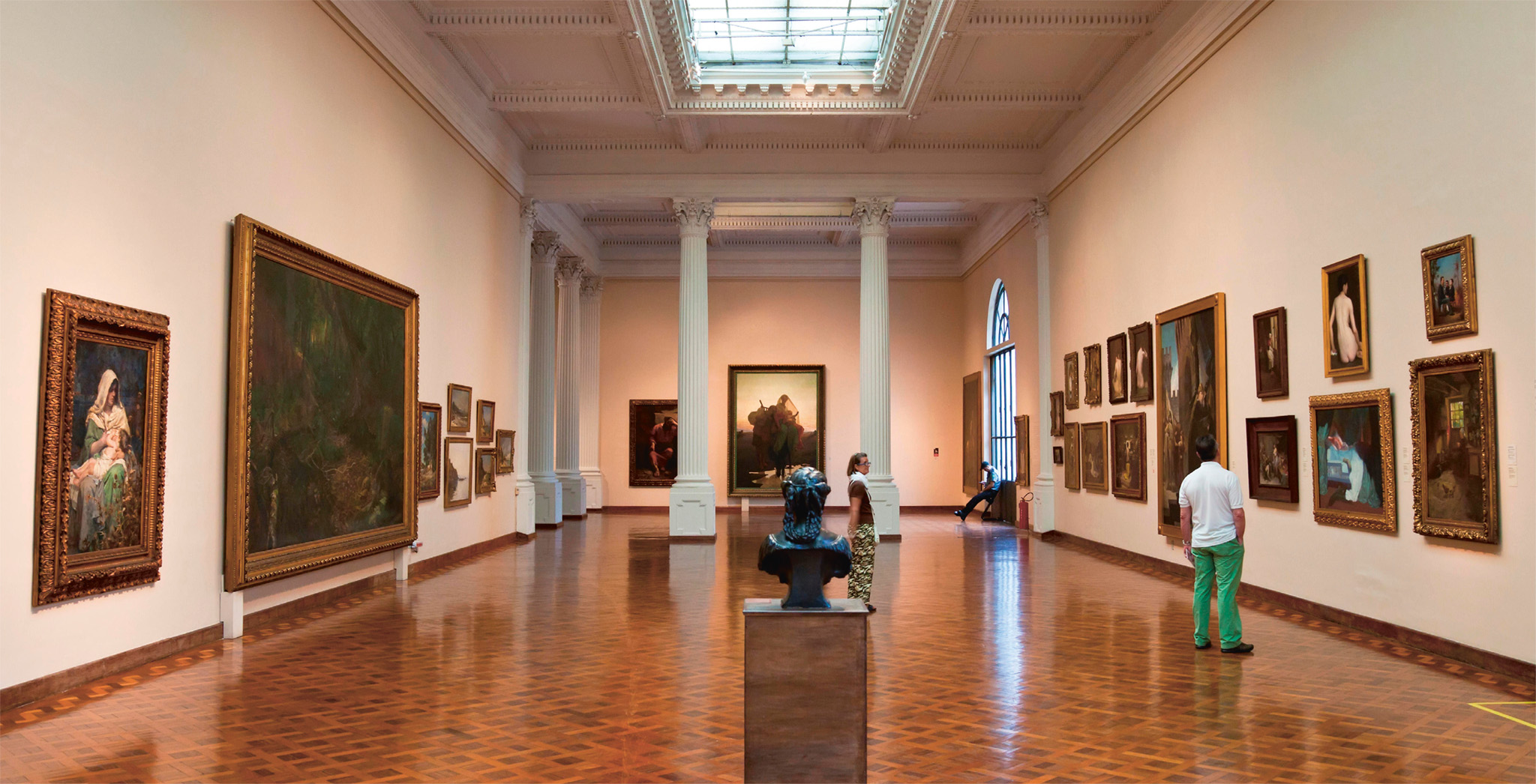
t Visitors admire artworks displayed in a gallery lit by skylights at the Museu Nacional de Belas Artes.

t Visitors admire artworks displayed in a gallery lit by skylights at the Museu Nacional de Belas Artes.
Experience Rio de Janeiro City
Centro (downtown Rio), at the mouth of Guanabara Bay, is where the city was formally born in 1565. The area was once the realm of the Tupí peoples (notably the Temininós and Tupinambás), but most were killed within decades of the arrival of the Europeans by the newly introduced diseases that came with them.
The French landed first, in 1555, and established the colony of France Antarctique. Two years later, the Portuguese destroyed this settlement, laying the foundations of Rio city. Rio flourished as a port in the 17th century. The sugar trade was booming, and relied heavily on forced labor. With thousands of enslaved Africans shipped to Rio to be taken to plantations inland, the city became the largest slave port in the Americas. Gold and diamonds that were pouring out of Minas Gerais were also exported from Rio. The city received a further boost in 1763 when it superseded Salvador as the country’s capital. Rio’s significance was confirmed in 1808 when the Portuguese Royal Court moved to Brazil. Paço Imperial was built on Praça XV de Novembro as the residence of emperors Pedro I and Pedro II. Building continued on a grand scale, culminating with the Teatro Municipal in 1909.
In 1960 the national capital moved to Brasília, and in 1975 Rio city became the capital of Rio de Janeiro state. Despite the loss in status, Centro remains the city’s historic core and financial district, headquarters to some of Brazil’s largest firms, including the Brazilian Development Bank, Petrobras, and Vale.